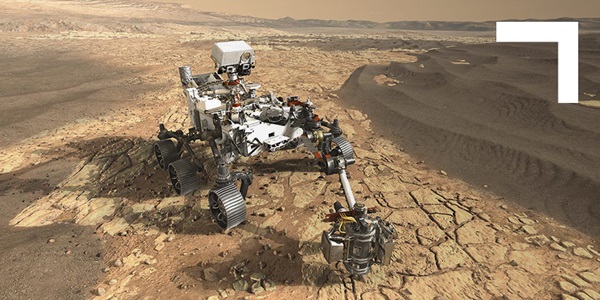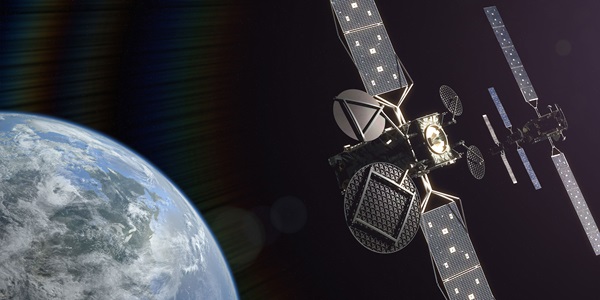Small But Mighty

By Kelly McSweeney

Navigation Receives a Quantum Upgrade
"We're using quantum technology to aid navigation more precisely and robustly than you would be able to accomplish with traditional navigation aiding approaches," says Dennis Bevan, Program Manager for Navigation Instrument Technologies at Northrop Grumman.
Current navigation systems use inertial measurement units (IMU), which determine a platform's speed, direction and attitude from accelerometers and gyroscopes, and couple this with information from a Global Positioning System (GPS) receiver to precisely determine location. The GPS information provides the starting point, and the IMU provides information to determine the change from that starting point. Errors in the IMU output (for example, drift) can be corrected with periodic input from the GPS receiver.
In the absence of GPS — for example, if the GPS signal is jammed or the platform is underground or underwater — a magnetometer can be used in conjunction with magnetic maps to help determine the platform location. Now, quantum magnetometers are being developed using advanced quantum technology to provide ultra-sensitive magnetic detection instruments.
"My part is to make sure that the electronics, mechanical components, optics and lasers all come together and properly represent the physics we need in the sensor in order for it to perform well."
– Dr. Michael Larsen, Senior Staff Physicist

High Tech Advancements Require Patience and Precision
All of these sensors are backed by decades of fundamental research and technical development.
"The time it takes to develop high-performance inertial sensors can actually be very long from first concepts through to first products," says Dr. Michael Larsen, senior staff physicist. He adds, "Short would be 30 years. Long is 110 years."
One of today's most advanced gyroscopes, for example, the hemispherical resonance gyro (HRG), is based on physics that was first conceived and described in the 1890s.
Quantum technology sounds futuristic, but developing it requires patience. As part of the Emerging Capabilities Development (ECD) group, Bevan, Larsen and electromechanical engineer Michael Bulatowicz work on developing sensor technology that is 10 years away from production. They work on magnetometers for a range of defense applications, such as biomedical imaging and detecting magnetic anomalies underground and underwater.
"My part is to make sure that the electronics, mechanical components, optics and lasers all come together and properly represent the physics we need in the sensor in order for it to perform well," Larsen explains.
A Perfect Pair: Science and Technology
This kind of advanced technology is made possible through collaborations between academia and industry. That's why Northrop Grumman has partnered with a research group led by Dr. Robert Wyllie at Georgia Tech Research Institute and a group led by Dr. Thad Walker at the University of Wisconsin-Madison to work on quantum sensing and a new approach to magnetometry.
Working together with these university partners, Northrop Grumman's ECD group developed a new type of magnetometer. Previously, they had developed a technique for Nuclear Magnetic Resonance (NMR) gyroscopes that used nuclear spins by pumping atoms synchronously with how they are already spinning around a magnetic field.
"In the new approach, we're using electron spins in an alkali atom," says Larsen.
Much like a person standing in place pushing a merry-go-round, they pump to add spin right at the moment when the electrons are aligned with the pump direction.
This "synchronous pumping" (SP) technique was already invented, but the Northrop Grumman engineers and their university partners made some modifications to improve it, such as pumping at very short durations only when the spins were nearly perfectly aligned with the pump. Previous attempts at SP techniques produced a highly accurate sensor that could operate in Earth field, but it could not compete in sensitivity with a similar type of instrument called spin-exchange relaxation free (SERF) magnetometers.
While SERF magnetometers are extremely sensitive, they're not as accurate as SP magnetometers, and they require specialized environments with nearly no magnetic field. The new approach preserves the accuracy and operational capability of the SP magnetometer while also demonstrating nearly SERF-like sensitivity levels.
The new approach has now led to several patent applications and research and development contracts:
- A pulsed-beam atomic magnetometer system (US Patent 10,782,368)
- A pulsed-beam atomic vector magnetometer system (patent pending)
The Future Navigation is Smaller and Mightier
All of these projects are aiming toward a future with inertial sensors that are even smaller and more accurate than today's technology. While civilians are used to navigating with GPS, the military needs more precise and secure navigation. Bad actors could tamper with GPS signals by spoofing or blocking them. Plus, soldiers need to be able to navigate in extreme environments, such as underground and underwater.
"The Department of Defense is trying to get more reliant on just the inertial instruments and not having the GPS there to augment them," Bevan says.
More innovation stories
Read all stories about advanced technology and innovation >>


